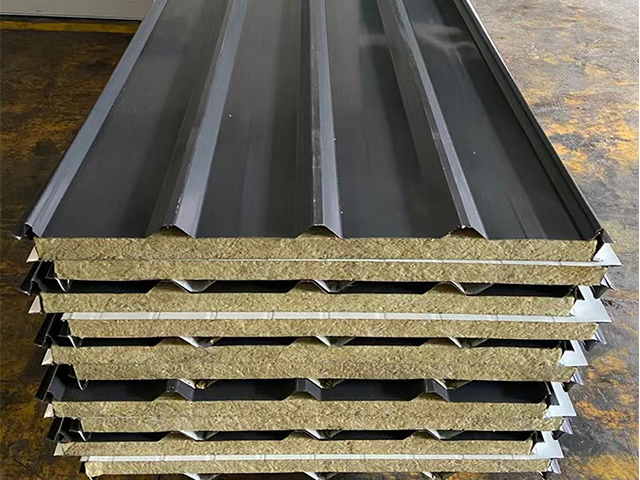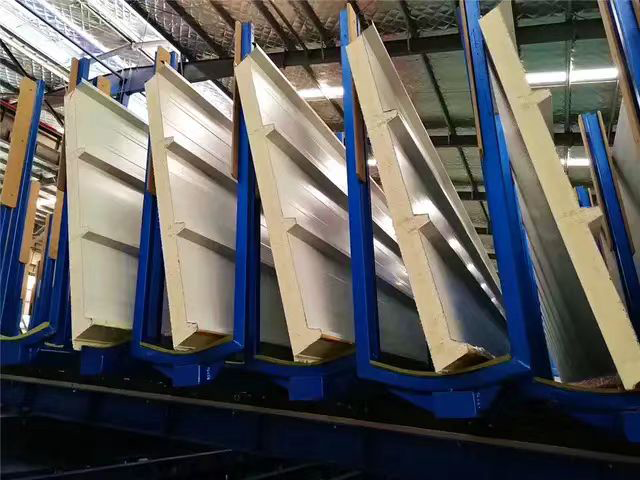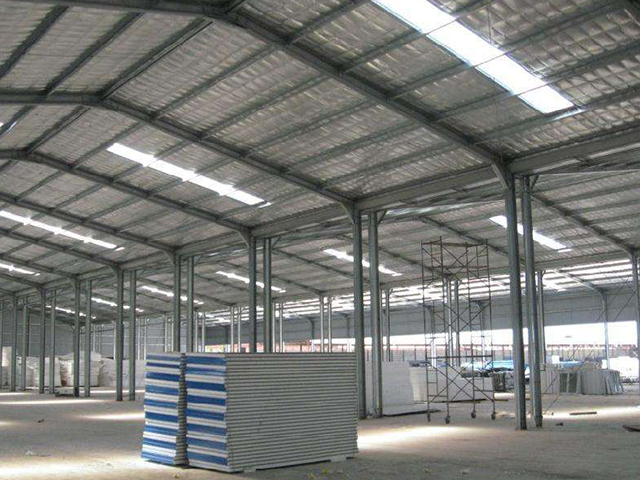Selecting High Durability Materials for Long-Lasting Metal Sheds
Steel vs Aluminum: Comparing Strength and Lifespan for Metal Shed Construction
Steel has about two to three times the tensile strength of aluminum, reaching as high as 580 MPa compared to just 270 MPa for aluminum. That makes steel the go-to material when building metal sheds that need to hold heavy loads. But there's a catch for steel in coastal regions. Without proper treatment, it tends to corrode much faster than aluminum does. Aluminum actually forms its own protective oxide layer naturally, which helps prevent rusting. Most aluminum sheds will stand strong for over twenty years with little upkeep if installed in inland locations where snow isn't too heavy. However problems start showing up when snow accumulates beyond around 35 pounds per square inch. If someone wants their shed to last through different weather conditions without constant repairs, steel usually needs some kind of protection coating like galvanization to keep up with what aluminum offers naturally in terms of resisting corrosion.
Understanding Metal Gauge, Corrosion Resistance, and Structural Integrity
Steel panel thickness is measured using gauge numbers where lower numbers like 16 to 24 actually mean thicker metal, which makes all the difference when it comes to how strong the structure will be. For instance, a 16 gauge panel can handle winds blowing at around 110 miles per hour, while something thinner like 24 gauge would start showing problems once the wind hits about 75 mph mark. What happens over time with corrosion varies quite a bit depending on what kind of material we're talking about and what kind of protection has been added. Regular steel without any coating tends to start rusting pretty quickly, usually within just two years if left in places where there's lots of moisture hanging around. Galvanized steel that gets coated with zinc lasts much longer though, typically giving us an extra six to eight years before needing replacement. Aluminum looks good for a long time outdoors but does have its limits too. After sitting out in strong sunlight for ten whole years, aluminum panels tend to lose about 15 percent of their original strength, so this needs consideration when planning for long term durability.
Galvanized and Galvalume Steel: Best Options for Weather and Rust Resistance
Galvalume steel, coated with a blend of zinc, aluminum, and silicon, outperforms standard galvanized steel by up to four times in salt spray tests due to superior corrosion resistance. This makes it especially effective in harsh or coastal conditions.
| Property | Galvanized Steel | Galvalume Steel |
|---|---|---|
| Corrosion Resistance | 50–70 microns | 150–200 microns |
| Heat Reflectivity | 35% solar reflectance | 65% solar reflectance |
| Coastal Lifespan | 12–15 years | 25+ years |
The enhanced heat reflectivity of Galvalume also reduces interior temperature buildup, improving performance in hot climates.
Material Performance in Harsh Climates: Choosing for Heat, Humidity, and Snow
When it comes to desert areas where temps often hit above 100 degrees Fahrenheit, aluminum sheds actually bounce back more heat than their steel counterparts. This helps keep things cooler inside, but there's a catch they need stronger frames to hold up against those nasty dust storms that sweep through. Moving on to places near the coast or in humid climates, we're talking about galvanized or Galvalume steel here with all those seams properly sealed. Salt air really eats away at materials fast sometimes up to 40% quicker than what happens in drier spots. And then there are the snow belts where folks get slammed with more than 60 inches each year. In these conditions, going with 14 gauge steel makes sense because it gives buildings enough strength to handle ice build up around 4 inches thick before anything starts bending out of shape.
Building a Stable Foundation to Prevent Moisture Damage and Extend Shed Life
Concrete Slab vs Gravel Base: Pros, Cons, and Installation Tips
Metal sheds need good foundations to keep them safe from damp earth and prevent shifting over time. Concrete slabs tend to last really long if done right sometimes even past three decades whereas gravel bases are cheaper but still let water drain away well. Some recent research from the Outdoor Storage Foundations folks shows that going with concrete cuts down on rust problems about half compared to just putting sheds on dirt or lawn areas. This makes sense practically since most people don't want their storage buildings turning into rusty skeletons after a few seasons.
| Base Type | Cost per sq.ft. | Installation Time | Moisture Resistance |
|---|---|---|---|
| Concrete Slab | $8–$12 | 3–5 days | High (impermeable) |
| Gravel Base | $3–$6 | 1–2 days | Moderate (drainage) |
Getting concrete right means making sure it's level enough and giving it proper curing time. The good news is that concrete keeps those pesky burrowing critters at bay and stands up pretty well against frost heaving in colder areas. For gravel bases, putting them on top of some geotextile fabric works wonders for keeping weeds out and making things more stable overall. No matter what material gets used, remember to angle the base about a quarter inch for every foot away from the shed so water runs off properly. This simple step gets ignored way too often, but trust me, it makes all the difference down the road. Gravel has this nice flexibility that makes it great for places prone to flooding, whereas concrete tends to hold its own better in snowier regions where the ground shifts around a lot during freeze-thaw cycles.
Next, we’ll explore grading and drainage strategies to complement your foundation choice.
Assembling the Metal Shed Framework for Maximum Structural Security
Benefits of Pre-Engineered Metal Shed Kits for DIY Builders
Metal shed kits that come pre-engineered really simplify putting things together and tend to hold up better structurally too, which is why many DIY enthusiasts go for them. These kits usually come with panels already cut to size, holes drilled where they need to be, and parts clearly marked so folks don't get confused during setup. According to some recent research from the National Association of Home Builders in 2023, mistakes during installation drop by around 40% when using these ready-made kits instead of building from scratch. Most people find they can assemble everything with just a few simple tools like a cordless drill and maybe a rubber mallet or two. Even those who aren't exactly handy with tools often end up with something that looks pretty good. Plus there's another nice thing about these kits too their modular design means homeowners can actually expand their sheds later on if needed, creating extra storage space whenever life throws new stuff at them.
Step by Step Panel Alignment, Joint Sealing, and Fastener Use
- Align panels vertically using corner posts as guides, maintaining a consistent 1/8” gap to accommodate thermal expansion.
- Secure panels temporarily with clamps before final fastening to preserve alignment.
- Apply butyl tape to overlapping seams and silicone sealant at joints, reducing water infiltration by 70% in simulated rain testing.
- Tighten fasteners in a crisscross pattern to evenly distribute pressure and prevent warping.
Use a torque wrench set to 15–20 ft-lbs to avoid overtightening galvanized components, which can compromise thread integrity and lead to premature wear.
Securing the Structure: Ground Anchors, Bolts, and Wind-Resistant Fixings
When it comes to ground anchors, those set into concrete footings actually provide about three times better uplift resistance compared to ones placed on gravel bases according to ASTM International research from 2022. If we're talking about areas where winds blow hard, then spacing these anchors roughly four feet apart around the edges makes sense, while also making sure to secure base rails properly with good old J-bolts attached directly to the foundation itself. Now for places that regularly face hurricanes, extra reinforcement at the corners is definitely worth considering. Adding diagonal steel braces there helps fight off those sideways forces that can really mess things up during storms. And let's not forget about rust issues either. Choosing fasteners that won't corrode over time matters a lot for long term stability. Stainless steel options work great, but even regular bolts with proper zinc coating will do the trick if budget constraints apply.
Weatherproofing Strategies to Enhance Durability and Water Resistance
Implementing robust weatherproofing ensures your metal shed withstands prolonged exposure to rain, humidity, and extreme temperatures, minimizing rust and prolonging service life.
Sealing Seams and Joints with Industrial-Grade Sealants
Tiny spaces between panels let water sneak in over time. The best sealants today are made from high quality polyurethane or silicone, some even mixed with nano stuff that makes them last longer. These products create strong seals that stretch and shrink as temperatures change, staying intact even when it gets really hot or cold outside. A recent study on building materials confirmed this works well across a wide temperature range. Before applying any sealant, make sure surfaces are spotless clean. Focus extra attention on areas where roofs meet walls and at the bottom corners of installations since these spots tend to collect water first and cause problems if not properly sealed.
Adding Secondary Barriers: Tarpaulins and Vapor Retarders for Extreme Conditions
For regions that get hammered by winter snow or summer downpours, adding extra layers to basic waterproofing makes all the difference. Putting thick tarps on top of roofs stops around 90% of both sunlight damage and rainwater from getting through. Down below, special membranes under floors help keep groundwater from seeping up into buildings. When combined, these methods cut indoor dampness by roughly 70%. That means less condensation builds up on surfaces, so metal parts inside structures stay protected from rust and decay over time. Builders who implement this strategy often report fewer maintenance issues during harsh weather seasons.
Climate Specific Waterproofing for Rainy, Humid, or Coastal Environments
When building sheds along coastlines, it's wise to go with sealants that contain salt neutralizers and use galvanized steel parts that have passed those ASTM B117 salt spray tests. Most folks forget about this until corrosion starts showing up. In areas where humidity is high, raising the shed base between six to eight inches on concrete blocks makes sense, especially if there are issues with moisture getting trapped underneath. Adding some louvered vents helps keep air moving through the space which cuts down on condensation problems. Rainy areas require different considerations too. Extending the roof overhangs by around twelve inches gives better protection from heavy downpours. The ground around the shed should be sloped at about five degrees to direct water away. This setup typically handles between two hundred to five hundred gallons of rainwater each year, though actual amounts will depend on local rainfall patterns. Proper drainage not only protects the shed itself but also keeps the foundation intact over time.
FAQ Section
What are the main materials used in metal shed construction?
The main materials used in metal shed construction are steel and aluminum. Steel offers higher strength but requires protective coatings to resist corrosion, while aluminum naturally resists rust but needs strong frames in coastal regions.
Why is the metal gauge important in shed construction?
The gauge determines the thickness of metal panels. Lower gauge numbers equate to thicker metal, which enhances the structural integrity and resistance to weather conditions like strong winds.
How does weatherproofing enhance shed durability?
Weatherproofing with industrial-grade sealants, tarpaulins, and vapor retarders minimizes moisture and rust, thereby prolonging the shed's service life across various climates.
Table of Contents
-
Selecting High Durability Materials for Long-Lasting Metal Sheds
- Steel vs Aluminum: Comparing Strength and Lifespan for Metal Shed Construction
- Understanding Metal Gauge, Corrosion Resistance, and Structural Integrity
- Galvanized and Galvalume Steel: Best Options for Weather and Rust Resistance
- Material Performance in Harsh Climates: Choosing for Heat, Humidity, and Snow
- Building a Stable Foundation to Prevent Moisture Damage and Extend Shed Life
- Assembling the Metal Shed Framework for Maximum Structural Security
- Weatherproofing Strategies to Enhance Durability and Water Resistance
- FAQ Section






